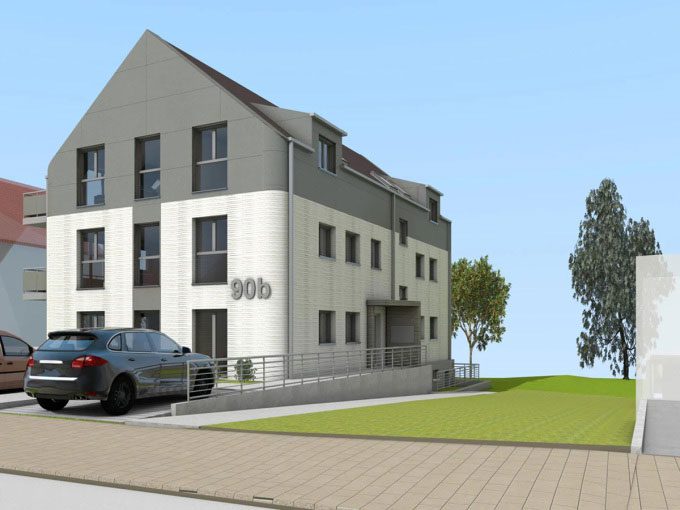The new project, considered the first 3D-printed social housing apartment complex in Germany, is expected to consist of three floors with a total area of 651m2.
3D printing technology is becoming increasingly popular worldwide, and one of the latest examples is a low-rise apartment building in Germany, as reported by New Atlas on November 6th. The project will combine advanced 3D printing technology with wood, aiming to provide affordable social housing. However, the project team has not announced a projected completion date.

Design of the affordable 3D-printed apartment building in Germany. (Photo: Steinhoff Architekten).
The 3D printer manufacturer COBOD has referred to this as the first 3D-printed social housing apartment complex in Germany. The German 3D printing company, Peri 3D Construction, is constructing this building in the town of Lunen. The building is expected to have three floors, with each floor containing two subsidized rental apartments. The six apartments will range in size from 61m2 to 81m2, with a total building area of 651m2.
The first two floors of the apartment complex will be built using the COBOD BOD 2 printer, the same type of printer used to construct the post office in Bengaluru, India, and an earthquake-resistant house in Guatemala earlier this year. The printer will perform on-site construction by extruding a cement-like mixture layer by layer, creating the structural shell of the first two floors according to the design. The entire printing process is expected to take 100 hours.
The third floor will be made of wood and will be installed by human workers. The exterior of the first two floors will retain the original 3D-printed concrete structure with its characteristic patterns, while the upper wooden floor will be finished with exterior cladding. In addition to constructing the wooden floor and installing the roof, builders will also install windows, electrical systems, plumbing, and all other necessary elements.
“We are excited to once again demonstrate how 3D printing can create living spaces quickly, efficiently, and resource-conservatively, while also showcasing the potential in the multi-family housing sector. We believe this technology is ready for widespread use on modern construction sites, especially in social housing projects,” stated Fabian Meyer-Brotz, director at Peri 3D Construction.


















































